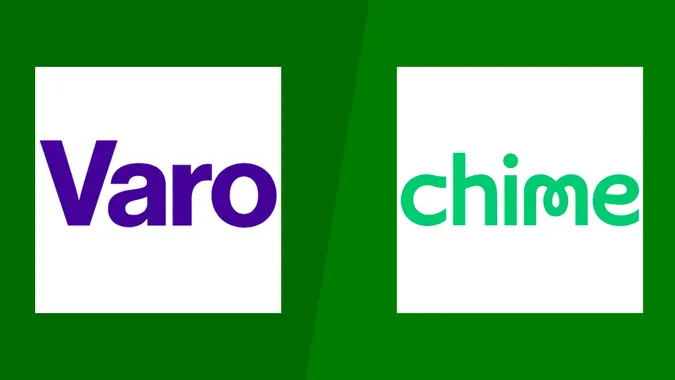2 Ways To Use Your Bank’s Budgeting Tools Effectively

Commitment to Our Readers
GOBankingRates' editorial team is committed to bringing you unbiased reviews and information. We use data-driven methodologies to evaluate financial products and services - our reviews and ratings are not influenced by advertisers. You can read more about our editorial guidelines and our products and services review methodology.

20 Years
Helping You Live Richer

Reviewed
by Experts

Trusted by
Millions of Readers
Creating a budget is typically the first step in any financial plan. Being able to see what money is coming in and out allows you to know exactly where your funds are going, and can help you see how much money you can reasonably dedicate to financial goals such as paying off debt, building an emergency fund or saving for retirement.
There are a number of budgeting tools available, but the most seamless option is often the one offered by your own financial institution. Here’s how to use your bank’s budgeting tools effectively.
Track Every Dollar
A good budget is extremely thorough.
“A budget includes sources of income and a list of all expenses — both fixed and flexible,” said Sasha Grabenstetter, AFC, senior financial planning education consultant at eMoney Advisor. “Fixed expenses — such as a mortgage or car payment — are the same dollar amount each month, and flexible expenses change month to month. [These] include groceries, gas, daycare expenses or entertainment. It’s also important to account for occasional expenses that might occur only once or twice a year, because they can make your budget out of balance if you do not prepare for them.”
Once you’ve tracked all of your expenses, you can see how much is left over to dedicate to your personal financial goals.
“There should be a line item for each applicable type of savings account, such as emergency funds, new home/car deposit, business taxes not being withheld, travel/vacations, IRA contributions and investments,” said Sallie Mullins Thompson, principal and managing member at Sallie Mullins Thompson, CPA PLLC.
Consider Sticking To a Budgeting Rule
To set yourself up for success, consider sticking to a budgeting rule such as the 50/15/5 rule, a version of the traditional 50/30/20 rule.
“According to the rule, 50% of take-home pay is allocated to essential expenses, 15% of pre-tax income — including employer contributions — is saved for retirement and 5% of take-home pay is used for short-term savings,” said Grabenstetter. “The remaining income (30%) can be saved or used for discretionary expenses. This method can help show individuals what they should strive to spend, but ultimately, it may not work for every person or household. In the end, a budget should either balance to zero or have extra income left over. A financial professional is a good resource to help people determine the budget that works for them.”
If your expenses tend to be on the higher side, consider the 60/30/10 budgeting rule. This rule calls for dedicating 60% of your income toward needs, 30% toward wants and 10% toward savings.
“Many consumers are finding that they’re spending closer to 60% of their income on necessities instead of 50%,” said Andrew Harris, managing director at Jenius Bank. “External factors like inflation are making it difficult to make ends meet and still feel like we can enjoy our lives. The reality is that our financial priorities need to shift with the times. Saving for a new car or a house may have been No. 1 at this time last year, but now it could be just paying rent.”
Popular Bank Budgeting Tools
Once you understand the basics of budgeting, it’s time to try it out for yourself. Many banks offer their own budgeting tools that can help you with your financial planning.
Ally Savings Buckets
If you have an Ally Bank savings account, you can create up to 10 different savings “buckets” for different goals to easily track your progress. Ally also has free budgeting templates available to download.
Bank of America Spending & Budgeting Tool
Bank of America’s Spending & Budgeting tool provides interactive charts that can help you to identify spending trends to see the categories where you are over and under budget. The tool is available in both the mobile app and on desktop.
Capital One Mobile App
You can easily track your spending via the Capital One mobile app. This can help you create a budget based on your activity.
Chase Budgeting Tool
You can access Chase’s budgeting tool via the mobile app. In the app, you can see a detailed recap of your spending and also create a budget. The budget tool allows you to add your income and saving targets, as well as monthly bills and other spending categories. You can set a budget amount for each category. Once your budget is set, it’s easy to track your progress and make any changes as needed.
Wells Fargo Budget Watch
The Wells Fargo Budget Watch tool automatically updates based on your spending activity, so you can easily see what categories you may be overspending on. You can also set and track goals with a snapshot view of your money coming in and going out.
More From GOBankingRates
 Written by
Written by  Edited by
Edited by 

























